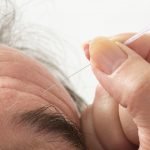Aging Gracefully with Cannabis
ROB STREISFELD, NMD
As society appears to have a growing acceptance and increased understanding of plant-based diets, dietary supplements, and even medications, Cannabis sativa is back in the spotlight.
With over 500 compounds currently identified within the plant, including cannabinoids, terpenoids, flavonoids, and micronutrients,1 the opportunity to integrate Cannabis into a functional, healthy lifestyle brings with it tremendous potential for a wide range of health conditions and demographics.
Cannabis & Healthy Aging
While an immense amount of Cannabis research is currently aimed at the treatment of specific diseases and conditions, there is also a need to investigate the plant’s preventative and health-promoting benefits. One area where this approach for utilizing Cannabis has garnered significant interest is healthy aging. As the number of elderly people in our population continues to climb, quality of life and overall well-being are becoming greater areas of focus for this demographic. Efforts at anti-aging and growing old gracefully can all be supported by the correct use of Cannabis.
Pain Management
One area where this applies is pain and inflammation. Consuming Cannabis either orally or topically has been shown to reduce pain and inflammation in users.2,3 A growing body of research has revealed that the production of proinflammatory cytokines and other inflammation mediators in osteoarthritis-induced joint pain is accompanied by activation of the endocannabinoid system, suggesting a mechanisms for the anti-inflammatory and analgesic effects of cannabinoids targeting cannabinoid-2 (CB2) receptors.2
THC and/or CBD have been shown to be effective against neuropathic pain in diabetes, various autoimmune diseases, intractable cancer pain, and other disorders.2,3 Pain reduction by Cannabis in itself is of great value, but especially so when combined with a reduced dependence on prescription opioid-based medications in users of Cannabis.4,5
Sleep
A second area where Cannabis can be of benefit to the elderly is sleep. We all need quality, restful sleep to maintain our health. Too often, though, especially in aging, an underlying stress or imbalance impacts a person’s ability to fall asleep, stay asleep, or have restorative sleep. This can result from a variety of factors, such as disrupted circadian rhythms due to one’s work schedule, hormonal fluctuations, life circumstances, etc. Cannabis has been shown to impact sleep; however, its effects can be dramatically different depending on which phytocannabinoids are being utilized. For example, some phytocannabinoids, such as tetrahydrocannabinol (THC), may assist in falling asleep but may compromise long-term sleep quality, whereas others, such as cannabidiol (CBD), may improve REM sleep.6 Research related to nightmares, post-traumatic stress disorder (PTSD), and other sleep-related factors is ongoing.6-8
Cognitive Function
We cannot fail to mention cognitive function when it comes to aging. Over the past 80 years or so, the term “reefer madness” has unscientifically referred to a supposed negative impact of Cannabis on cognitive stability. While it is not recommended to consume delta-9-THC before at least 18 years of age unless medically necessary, there are today a growing number of successful, fully-functional adults who consume Cannabis regularly, if not daily. Many even tout Cannabis as a way to help manage their attention-deficit/hyperactivity disorder (ADHD).9
Recent human and animal research suggests that cannabinoids such as CBD may actually improve cognition and could even benefit individuals suffering from Alzheimer’s disease.10
Nutrition
Finally, Cannabis research over the years has helped to identify nutritional benefits from consuming various parts of this plant. Malnourishment is often a significant issue among people over age 6511; thus, essential fatty acids, protein, fiber, and micronutrients become increasingly important in this population. Integrating nutrient-dense, plant-based foods into the diet such as hemp seeds offers a solution, with an increasing number of options available.12
Summary
Cannabis has been shown to promote health and vitality for thousands of years across numerous cultures. Modern research supports the incorporation of Cannabis into one’s daily regimen, in some form or dose, as it holds tremendous benefit for all ages, but especially those >65 years of age.
While it is inevitable that we all age, how we age and the steps we take to live our best life is up to each person individually. Staying mobile and without pain, improving one’s diet, getting enough sleep, and keeping fit, both physically and mentally, are all fundamental to aging gracefully. We can confidently add Cannabis use to this list, as we continue to study this amazing plant for its benefits in the areas of health and happiness for all ages.
References:
- UCLA: Cannabis Research Initiative. Cannabis and its Compounds. Available at: https://cannabis.semel.ucla.edu/compunds/#:~:text=Cannabis%20contains%20over%20500%20distinct,cannabis%20and%20other%20flowering%20plants. Accessed March 5, 2021.
- Bruni N, Della Pepa C, Oliaro-Bosso S, et al. Cannabinoid Delivery Systems for Pain and Inflammation Treatment. Molecules. 2018;23(10):2478.
- Russo EB. Cannabinoids in the management of difficult to treat pain. Ther Clin Risk Manag. 2008;4(1):245-259.
- Reiman A, Welty M, Solomon P. Cannabis as a Substitute for Opioid-Based Pain Medication: Patient Self-Report. Cannabis Cannabinoid Res. 2017;2(1):160-166.
- Vyas MB, LeBaron VT, Gilson AM. The use of cannabis in response to the opioid crisis: A review of the literature. Nurs Outlook. 2018;66(1):56-65.
- Babson KA, Sottile J, Morabito D. Cannabis, Cannabinoids, and Sleep: a Review of the Literature. Curr Psychiatry Rep. 2017;19(4):23.
- Germain A, McKeon AB, Campbell RL. Sleep in PTSD: Conceptual model and novel directions in brain-based research and interventions. Curr Opin Psychol. 2017;14:84-89.
- Bonn-Miller MO, Pollack CV Jr, Casarett D, et al. Priority Considerations for Medicinal Cannabis-Related Research. Cannabis Cannabinoid Res. 2019;4(3):139-157.
- Mitchell JT, Sweitzer MM, Tunno AM, et al. “I Use Weed for My ADHD”: A Qualitative Analysis of Online Forum Discussions on Cannabis Use and ADHD. PLoS One. 2016;11(5):e0156614.
- Zadik-Weiss L, Ritter S, Hermush V, et al. Feline cognitive dysfunction as a model for Alzheimer’s disease in the research of CBD as a potential treatment—a narrative review. J Cannabis Res. 2020;2(1):43.
- Haines J, LeVan D, Roth-Kauffman MM. Malnutrition in the Elderly: Underrecognized and Increasing in Prevalence. February 7, 2020. Available at: https://www.clinicaladvisor.com/home/topics/geriatrics-information-center/malnutrition-in-the-elderly-underrecognized-and-increasing-in-prevalence/. Accessed March 1, 2021.
- Medical News Today. Health benefits of hemp seeds. Last reviewed on September 11, 2018. Available at: https://www.medicalnewstoday.com/articles/323037#nutritional-benefits. Accessed March 5, 2021.

Rob Streisfeld, NMD is a passionate consumer advocate and educator with over 20 years of Natural Health and Natural Products industry experience. “Doc Rob,” as widely known, is a doctor of naturopathic Medicine (SCNM/’02) and certified natural food chef. Over the past decade he has helped to identify and expand numerous key health categories. His recent passion is rooted in Cannabis, cannabinoids, and the benefits they offer. Doc Rob has authored The Cannabis Conundrum, and he hosts a podcast, “Concierge for Better Living,” on Apple, iHeartRadio, Spotify, and other platforms.










